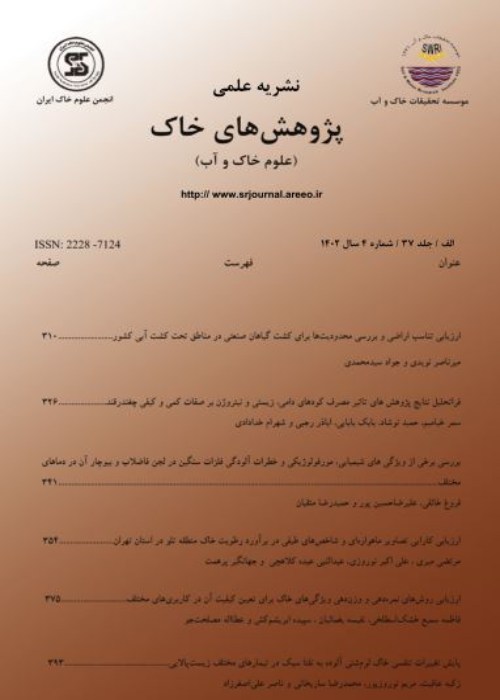Effects of Petroleum Contamination on Water Repellency and Water Characteristic Curve of Two Different Soil Textures
Water repellency is one of the major problems of oil-contaminated soils and influences water redistribution via reduced infiltration, enhanced surface runoff and soil erosion, and preferential flow. The objectives of this study were to examine the effects of petroleum on water repellency and soil water content. Undisturbed samples were collected from sandy loam and clay loam textured soils and three levels of petroleum including 0, 0.5% and 1% (w/w) were added to the samples. The water drop penetration time (WDPT) test was used to measure the water repellency of soils. The soil water characteristic curve (SWCC) of the soil cores was measured using sandbox and pressure plate apparatus. The van Genuchten-Mualem model was fitted to the SWCC data and soil physical quality index (S) as defined by Dexter. Increment of petroleum increased the soil water repellency and sandy soils were most susceptible to water repellency due to low specific surface area. Petroleum contamination also changed soil pore size distribution, as the soil field capacity and available water content (AW) was increased due to development of soil microporosity. Although greater water repellency increased AW in the polluted samples, reduction in soil macroporosity could result in unfavorable condition for plant growth. Petroleum contamination affected the shape and slope of SWCC. Water retention in petroleum-contaminated soil of the two textures of sandy loam and clay loam was lower at low suction values due to decrease in macroporosity, while in clay loam soil it was higher at high suction values due to increase in microporosity. Petroleum significantly decreased the S index of both soil textures;but it was more severe in sandy loam texture. According to Dexter classification and results, water repellency due to petroleum decreased soil quality by reducing macro pores and S index (ranged between 0.02 to 0.035), which have unfavorable result for plant growth. Also, coarse textured soils could develop water repellency more readily.
- حق عضویت دریافتی صرف حمایت از نشریات عضو و نگهداری، تکمیل و توسعه مگیران میشود.
- پرداخت حق اشتراک و دانلود مقالات اجازه بازنشر آن در سایر رسانههای چاپی و دیجیتال را به کاربر نمیدهد.


